As in previous years, our December issue offers a retrospectiveof the topics we covered over these past 12 months. CitizensProperty Insurance Corp., the Florida Hurricane Catastrophe Fund,and legislative and regulatory activity justifiably earned space inmost issues. However, we also provided extensive coverage aboutworkers’ compensation, excess and surplus lines, a variety ofagency management topics, health care, and many of the ancillarylines of coverage that round out an agency’s book of business. Weinvite you to revisit 2011 through these excerpts. As an addedbonus, our website makes it is easy to access the full text of allof our articles. Simply go to www.propertycasualty360.com, click onthe Florida Underwriter magazine tab, select the appropriate monthfrom the pull-down menu, and enjoy a second read of your favoritefeatures. We have included the titles of the excerpted articles foreasy reference.
| JANUARY
JANUARY
Let’s Get to Work!
What a difference an election can make. Last year, some folks inthe insurance industry and employer community wondered aloudwhether the 2003 reforms cut injured workers’ benefits toodeeply. Now, the man who occupies the governor’s mansion iscalling for a 35 percent decrease in the cost of workers’compensation insurance.
Last year, it was thought legislators might be under pressure toincrease workers’ benefits in the 2011 session. Some legislatorseven raised the argument that because SB 50-A produced far greatersavings than its proponents originally anticipated, the time hadcome to give some of those savings back in the form of higherbenefits.
|Today it seems unlikely that the Florida Legislature will rollback any of the 2003 reforms, and in fact the new governor islooking for ways to further reduce workers’ compensation insurancerates.
|Mitigation Discounts Under Scrutiny
Insurers have reported that their underwriting profits have beenslammed due, in part, to mitigation discounts. The discounts havebeen painful to Citizens, and since the state-run insurer’s ratesare currently not actuarially sound, charging even less makes thespecter of assessments loom large.
At its board meeting in December, the Actuarial andUnderwriting Committee stated that as of mid-November, Citizens hadcompleted re-inspections of more than 7,200 buildings. Of thoseproperties, undeserved discounts were received by 64 percent ofpolicyholders in the personal lines account and 52 percent in thecommercial lines account. That equates to more than $5.3 million inpremium that should have been collected but was not.
|Blending the Florida Hurricane Cat Fund and TraditionalReinsurance
|Underwriting property catastrophe reinsurance in Florida is auniquely difficult undertaking. In general, property catastrophedeals written on an excess of loss (XOL) basis are consideredrelatively simple compared to other lines of reinsurance. InFlorida, however, when selling XOL coverage for residential risks,incorporating the effect of the state-run reinsurance company, theFlorida Hurricane Catastrophe Fund (Cat Fund), adds complexity tootherwise straightforward deals.
|Cat Fund coverage is a critical aspect of a Florida residentialinsurer’s reinsurance program and must be blended with traditionalproducts. A lack of understanding the critical differences betweenCat Fund coverage and traditional reinsurance can lead tounintended consequences.
| FEBRUARY
FEBRUARY
The Continuing Challenges of Florida’s E&S Market
Because of its unique position in the industry, E&S operationsare relatively free of regulatory interference. Surplus lines isnot, however, immune to the problems of the overall economy. Thetrending for Florida’s E&S premiums written has been a fairlyconsistent drop off for the past several years.
Annual Survey Reveals Risks, Rewards of InsuranceJobs
Of the 2011 respondents, 21.9 percent were CSRs, compared to 5.6percent in 2010. The rest of the occupation breakdown for 2011versus 2010 was: Underwriters, 5.6 percent in 2011, 6.3 percent in2010; Agents/Brokers, 53.6 versus 66.7; Others, 18.9 percent versus21.5 percent.
As testimony to the long-term viability of the insuranceprofession, a vast majority of the respondents said they have beenin the business for two decades or more; the average for allrespondents was 24.3 years. Fifty-two percent had college orpost-graduate degrees. Males accounted for 42 percent of therespondents; females 58 percent. This varies significantly from2010, when the gender ratio was males 66 percent, and females 34percent. The average age of respondents was 50.8 years. Theyoungest respondent was 24; the oldest 76.
|Surviving Group Health’s Perfect Storm
It’s been a perfect storm for agents and brokers selling healthplans to small businesses, Florida’s economic lifeblood. Theworst economic downturn since the Great Depression, the uncertaintyof health care reform, and the ever-rising cost of care haveconverged to create a difficult selling landscape. There areemerging opportunities, however, that can help ease the strainedsmall group sales environment. To benefit, brokers and agentsneed to understand these factors and communicate them effectivelyto current and prospective small group customers.
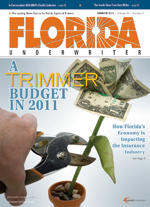 MARCH
MARCH
A Trimmer Budget in 2011
Driven by months of double-digit unemployment rates, politicians ofevery stripe—from the “let’s-get-to-work” governor to therank-and-file—are focused on job creation and economicrejuvenation. Debate is occurring at all levels on policy optionsthat will make Florida a more welcoming place to do business. Gov.Scott is advocating forcefully to slash and eventually eliminatecorporate income taxes and to reform the regulatory process. Scotthas often declared his disdain for regulation, claiming itadversely impacts job growth.
If these ideas prevail, the 2011 session could producesignificant opportunities for the business community at large—andthe insurance industry in particular—in terms of passinglegislation relating to issues such as tort reform, an impossiblefeat in previous years.
|Brown & Brown’s New Regional President Assesses theFlorida Insurance Market
At the peak of the economic boom, Florida was flying higher thanother states; not surprisingly, its recessionary low was lower thanmost other states. The states of Arizona and California are otherexamples, like Florida, that experienced the extremes of theeconomy. Similar to those states, Florida’s economy is showingsigns of recovery, albeit slow, and perhaps a little slower thanthe states that didn’t experience the extreme swings we did. Forsure the worst is behind us. Florida’s economy is starting to showsigns of improvement. The “comeback” in Florida I think hasbegun.
Agreeing on the Strategy Is Tougher Than Agreeing on theAsk
The agenda developed by the insurance community and its businessallies for Florida’s 2011 legislative session is our biggest “ask”ever. It includes a property package more comprehensive andstronger than SB 2044 vetoed by then-Gov. Charlie Crist in 2010;insurer bad faith law reform, including a right to cure;significant medical malpractice insurance issues; expanded ratederegulation for commercial insurance; flex rating for residentialinsurance; an insurance fraud package preserving the two topfraud-fighting tools, independent medical exams (IME) andexaminations under oath (EUO); and PIP attorneys fee caps. It isstaggeringly ambitious, but one reflective of the insurance marketcrises facing us.
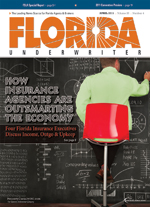 APRIL
APRIL
How Insurance Agencies Are Outsmarting the Economy
To gain a real-world perspective of how Florida’s agencies arefaring, we asked four local insurance executives to share theirsuccesses and challenges. Providing insight into how they managetheir offices’ income, outgo, and upkeep are: Tina BlackwellRomaine, chief operating officer of Blackwell InsuranceAgency, Panama City; John Hosey, president of Caton-Hosey Insurance, PortOrange; Ted Ostrander Jr., president and chief executive officer ofLassiter WareInsurance, Leesburg; and Joe Perry, president of J.P. Perry Insurance,Jacksonville.
Perry: Oddly enough, in the last several yearswe have had a couple of the best new-business years we have everhad. The issue is not new business. It is the existing commercialbook that is shrinking because of fewer employees, fewer grossreceipts, smaller inventories and fewer vehicles. We are areflection of our customers.
|Ostrander: We focus on providing servicesoutside the normal routine for an insurance agency. For example, wehave a full-time HR professional who will conduct a human resourceaudit for a client, review policies and procedures, and do justabout anything related to HR processes.
|Florida’s Insurance Industry Not Assured of Success in2011 Legislative Session
Florida lawmakers sauntered into the 2011 session promising to helpbusinesses, end red tape and regulation, and revive the state’seconomy.
The Republican-controlled Florida Legislature championed theidea of free markets at nearly every turn in the first few weeks ofthe 60-day session. However, so far it is clear that the insuranceindustry may not get everything it wants, even from a decidedlypro-business legislature.
|A comprehensive property insurance bill intended to address costdrivers that affect the bottom line of insurers is moving—but notwithout much debate, controversy and changes pushed by those whosay the measure is unfriendly to consumers. Other insurancemeasures also may have a rough time getting to the desk of Gov.Rick Scott. These include legislation affecting Citizens PropertyInsurance Corp., bad faith laws, and an ambitious proposal to allowinsurers to raise rates up to 30 percent a year without approvalfrom state regulators.
|Will Florida Become the Next Major Venue for CaptiveInsurers?
The scope of captive insurance in Florida could be significantlyexpanded if captive-specific legislation pending in the 2011Florida Legislature is ultimately enacted. HB 1235 and SB 1836 mayspur captive development in Florida as a result of the lowering ofcaptives’ capital and surplus requirements, as well as theexpansion of the types of captives permitted in Florida, includingthe creation of a “special purpose captive insurance company.”
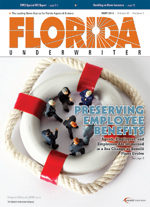 MAY
MAY
Preserving Employee Benefits
While nearly all workers have been impacted in some part by therecession, their financial and benefit needs, views and prioritiesdiffer greatly, due in part to age, behavior, and life managementstyles. This can translate into workers having vastly differentfeelings toward benefit offerings. To remedy the inflexibility ofthe single-offering benefit package, employers need to offer avariety of products and services that satisfy a diverse employeebase while staying within employer and employee budgetconstraints.
Today’s employees are looking for non-medical benefits such aslife, disability, dental, vision, identity theft, and legalservices to round out their health benefits. However, whileemployees need versatile benefit offerings, employers are notalways able to fully fund the program. Agents should adviseemployers that workers looking for these additional benefits areusually prepared to pay part or all of the cost.
|Board Debates Shoring Up Citizens
An analysis done by Citizens’ financial advisors shows that thecarrier’s high risk account—which covers many of the coastalproperties—has about $1 billion below what it needs to tap into theCat Fund.
Citizens plans to bolster its finances don’t stop withpurchasing private reinsurance. The carrier also is consideringborrowing anywhere from $500 million to perhaps as much as $1billion ahead of the hurricane season. The push by Citizens to getmore money to shore up its finances comes as the FloridaLegislature is debating whether to let the carrier raise itsrates.
|Storm of Negative Forces Hurting Workers’ CompensationMarket
In May of each year, the National Council on Compensation Insurance(NCCI) presents its annual State of the Line summary of theeconomic forces affecting the workers’ compensation market. We alsooffer stakeholders our thoughts on where the market will be headedin the next 12 months.
As we prepare to deliver that much-anticipated report again thisyear, the early signs are of a market that is struggling againstsome significant headwinds. Two forces, in particular, continue tobuffet the industry: A troubled job market and regulatoryuncertainty.
|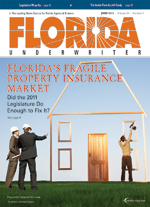 JUNE
JUNE
Florida’s Fragile Property Insurance Market
Citizens has become the primary insurer of sinkhole peril. Itssinkhole claim count averaged 200 per month at the end of 2010;during 2011, that has increased to 500 per month. These additionalliabilities and resulting claims are adversely affecting Citizens’already precarious finances. The carrier is paying out four to sixtimes more in sinkhole claim dollars than it receives inpremiums.
SB408, which finally passed as session wound down and was signedinto law by Gov. Rick Scott on May 17, sought to address sinkholesand other property insurance cost drivers. Prospectively, SB 408should eliminate or defuse cost drivers enough to resuscitate theprivate carrier market from a severe adverse trend innon-catastrophic loss ratios. Florida Association of Insurance AgentsPresident and CEO Jeff Grady went so far as to declare the session“absolutely a positive experience for the insurance industry.”
|Catastrophe Risk Management at the Point ofUnderwriting
While Florida insurers have long used catastrophe models to assessportfolio-level catastrophe risk, leading carriers assesscatastrophe risk before the policy is underwritten. Incorporatingcatastrophe modeling into the underwriting process is easier thanmost assume. Technology has advanced to the point where anindividual risk can be analyzed as part of an automatedunderwriting process.
Using catastrophe risk models at the point of underwritingallows underwriters to outmaneuver their competitors by writingpolicies for properties that hazard-based analyses reject, but arelikely better risks.
|Prized Collectibles Are OftenUnderinsured
Valued possessions are often inadequately insured by the contents’coverage of a homeowners’ or renters’ policy. For example, ahomeowners’ policy may have a $2,500 sub-limit (after deductible)for collections. The typical claims adjustment process wouldappraise these items at actual cash value. For a collector with agarage decorated as a vintage gas station or a dollhouse furnishedover a 40-year period, a $2,500 check will underinsure the loss bythousands—maybe tens of thousands—of dollars.
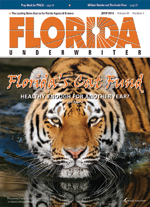 JULY
JULY
Florida’s Cat Fund: Healthy Enough for Another Year?
Inside a gray-carpeted conference room an obscure panel signs offon an important number: Just how much money could the state-createdreinsurance fund known as the Florida Hurricane Catastrophe Fund(Cat Fund) borrow if the state got hit by a big hurricane, or justas bad, a series of smaller storms?
The sophisticated guesswork that goes into this is more thansome academic exercise. This number is a reflection of thestability of the Cat Fund, itself an important backstop forinsurers that operate in the state, including Citizens PropertyInsurance Corp. And this year the answer is somewhat troubling.
|Waking Up to the Faults in No-Fault
When first enacted in the 1970s, no-fault auto insurance wasintended to address the underlying cost drivers in a tort-liabilitysystem that had made insurance more expensive than necessary.No-fault supporters pointed to benefits such as reducednon-economic damage compensation, increased compensation for injuryvictims, less compensation for personal injury attorneys, andfaster recovery of out-of-pocket expenses by accident victims. Whathas developed in the intervening 30 years is a seriously flawedsystem seemingly immune to repeated attempts at reform.
A Cautionary Tale for Wholesale Brokers
Although no Florida appellate court has discussed an independentwholesale broker’s potential liability for the actions of anunrelated retail agent, courts from other jurisdictions have heldthat a wholesale broker does not owe a duty of care to the insuredand certainly does not act as a fiduciary for the insured. AFlorida court does not have to accept these decisions as bindingprecedent, but a court will likely find these decisions to bepersuasive.
 AUGUST
AUGUST
Tech Smart!
According to technology researcher Gartner, Inc. thefour leading data initiatives in 2010 were: data standards,improving incoming data quality, customer data integration, andanalytics and business analytics. Gartner predicts that by 2012investment in data management and analysis technologies willincrease by more than 20 percent among property & casualty andlife insurers.
Technology in the hands of consumers also is changing the buyinglandscape. As Ivans, Inc.discovered in its 2011 Insurance Agents, Carriers & TechnologySurvey, 43 percent of agents surveyed thought the most threateningissue to their bottom line was “a customer shopping around for morequotes,” while 19 percent said it was “increased Internet sales oncarrier websites.”
|In My Opinion: Why Florida Chose NIMA
Under NIMA it will be the states (and elected officers representingthese states) that will ultimately manage and administer thisagreement. One of my greatest concerns about the SLIMPACT agreementis that it currently proposes allowing some of the members of the“Operations Committee” to be from the insurance industry and lawfirms. This would allow private entities to directly manage one ofstate government’s core functions: tax collection. NIMA allows thestates to retain this authority.
Getting the Word Out on Subrogation
Simply put, subrogating a claim means finding out who should beheld accountable for an accident. It is based on supporting theprinciple that people are responsible for their own actions. Theinsurance process is based on the foundation of correctly assessinglosses, both the potential for loss and an analysis after a lossoccurs. If subrogation were not available, the actual cost ofinsurance would rise in part because there would be no mechanism toprevent the insured from collecting from both the insurer and theparty responsible for the same loss.
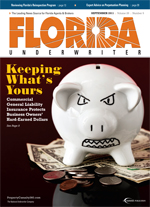 SEPTEMBER
SEPTEMBER
Keeping What’s Yours
“A CGL policy does more than just indemnify the insured for ajudgment entered at the end of a long court case,” explains JosephMathieu, assistant vice president of middle market commercialgeneral liability and umbrella underwriting for TheHartford. “For a covered claim, the policy also provides theinsured with a legal defense once a lawsuit has been filed. Intoday’s environment, the costs associated with defending a lawsuitcan be quite sizable and can pose a financial risk to a business inits own right.”
Is Citizens’ Rate Hike Backlash a Case of Buyer’sRemorse With SB 408?
Earlier this year, Florida lawmakers vowed that they were finallytaking the necessary steps toward fixing the state’s batteredproperty insurance market. In their 2011 legislative session theypassed a comprehensive property insurance bill that was meant tohelp insurers deal with some of the cost drivers impacting themarket. Now, just a few months later, a number ofpoliticians—including several who backed the new law—are upset withsome of the provisions that are being carried out.
Agency Perpetuation From the Lender’sPerspective
Perpetuation is an option only for well-run, profitable, andgrowing agencies. If your agency is not a good performer, it isunrealistic to expect your younger producers to “bail you out” withan offer. However, businesses with reliable, recurring revenue willalmost always have an opportunity to improve their operations ifthey are professionally run and managed with a daily focus ongrowing value. The best-conceived perpetuation plans thatyield completed transitions share some common characteristics.
 OCTOBER
OCTOBER
The Dollars and Sense of Workers’ Compensation
Historically, NCCI divides losses into primary and excess portions,with a longtime split point with a $5,000 cap.
The NCCI has proposed changing that primary loss cap beginningin 2013, the first such change in 25 years. The anticipatedchange—if approved—is expected to more than triple the current capby 2015.
|This gradual increase over 3 years is intended to compensate forthe increased claims amounts over the past years. While the optimumgoal for employers will still be zero accidents and a mod of 1.00or lower, the change is expected to bring an immediate andsignificant mind-shift about the impact of losses. By 2015, whenthe phase-in is complete, approximately $17,000 in claim costs willbe factored into mods at 100 percent. This amount will be indexedfor inflation for years after 2015. The result is premiums forcompanies with higher-than-average losses will increase, whilecompanies with better-than-average losses will be reduced.
|Insurance Commissioner Kevin McCarty Sinks Citizens’Rate Hike Request
A 45-day regulatory drama that began with Citizens Property InsuranceCorp.’s triple-digit sinkhole rate increase proposal on August3 ended with Florida InsuranceCommissioner Kevin McCarty’ s eleventh-hour denial on September19. The prequel for the face-off goes back to the 2011 legislativesession.
A Conversation With Florida Surplus Lines AssociationPresident Roy Fabry
We do not believe that Florida needs an influx of new carriers. Theonly area in which Florida has a problem is in homeowners’insurance. If the playing field is made even by bringing Citizen’srates to where they should be and making Citizens what it wasintended to be—the carrier of last choice—there wouldn’t be acapacity problem in that market.
 NOVEMBER
NOVEMBER
Going Green
As the ability to more accurately underwrite exposure and establishprices for environmental insurance has improved, the field ofcompetitors has enlarged. “Within the last 6 years the number ofcarriers in the U.S. market has increased from about a half-dozento about three dozen,” says Kristen Sebesky, assistant vicepresident of strategic marketing and distribution for theenvironmental division of Chartis. “Recognizing that environmental insurance can be aprofitable line has led carriers to be more creative and get intothe game. We definitely have seen an increase in competition.” Andwhile the increased competition generally is good for the market,it also can create some operational risks.
A Solution to PIP Fraud
Sadly, the Florida Legislature did nothing to address PIP fraud inthe 2011 session. Representatives and senators went before themedia to declare that PIP and accident fraud were major issues andthat they were committed to eliminating abuses. Yet for all theirtalk, they passed none of the legislation important to the Floridainsurance industry. Most bills died in committee, and the few thatmade it to the floor were either watered down or voted down.
I see a different solution to PIP fraud, one that depends lesson legislators and more on the insurance industry and consumers. Asinsurers, we need to direct our time and money to cleaning up thestreets and the courts.
|Researchers Like IKE
Since 1975, the Saffir-Simpson scale, with its five distinctcategories for characterizing hurricane wind damage, has been theguidepost by which local authorities and coastal dwellers decidehow to respond to an approaching storm. It has been a good tool foralerting people to possible impacts from storm-force winds, but itoverlooks other hurricane-related impacts that are moredevastating, such as storm surge and tornadoes. A newly patentedhurricane scale hopes to change that. Called the Integrated KineticEnergy scale (IKE), it predicts the potential destruction for bothwind and storm surge.
Ten Steps to Successful Cross-Marketing
The average age of the independent life agent is mid-50s, and thatwill continue to increase over the next decade; the industry is notenticing younger people to its ranks. However, as the independentsales force declines, the number of families needing professionallife services will increase, creating a perfect storm ofopportunity.
 DECEMBER
DECEMBER
Our final issue offers insight from industry experts LynneMcChristian of the Insurance Information Institute; William Standerof WHISPER, William H. Stander Public Relations, Inc.; and FredKarlinsky, Katherine Scott Webb, and Richard J. Fidei of the lawfirm Colodny, Fass, Talenfeld, Karlinsky & Abate. Enjoy.
Want to continue reading?
Become a Free PropertyCasualty360 Digital Reader
Your access to unlimited PropertyCasualty360 content isn’t changing.
Once you are an ALM digital member, you’ll receive:
- All PropertyCasualty360.com news coverage, best practices, and in-depth analysis.
- Educational webcasts, resources from industry leaders, and informative newsletters.
- Other award-winning websites including BenefitsPRO.com and ThinkAdvisor.com.
Already have an account? Sign In
© 2024 ALM Global, LLC, All Rights Reserved. Request academic re-use from www.copyright.com. All other uses, submit a request to [email protected]. For more information visit Asset & Logo Licensing.








